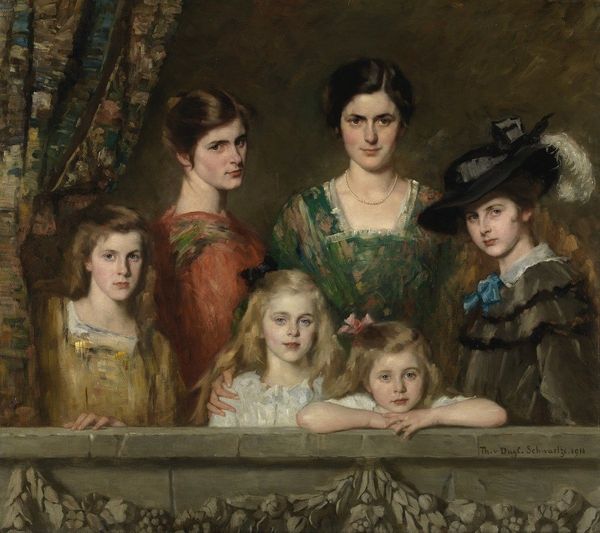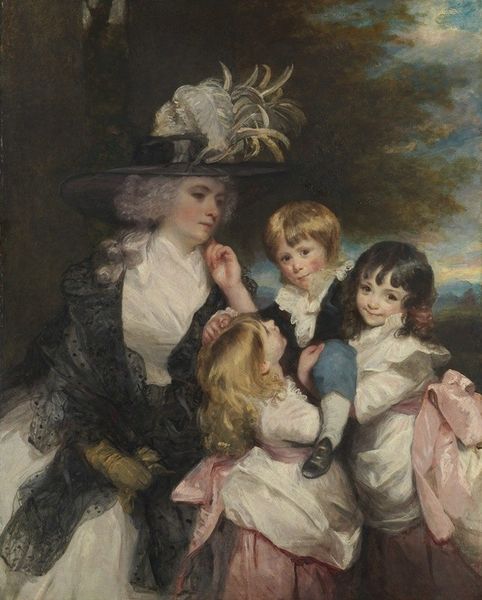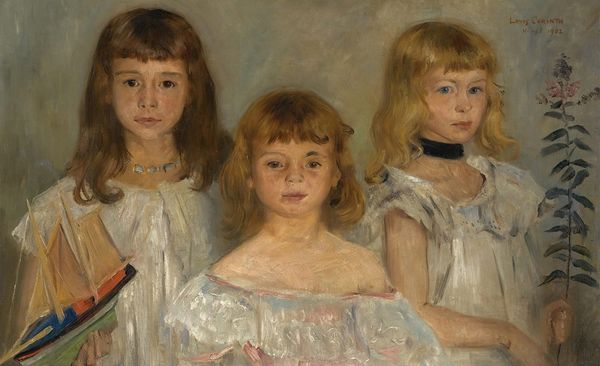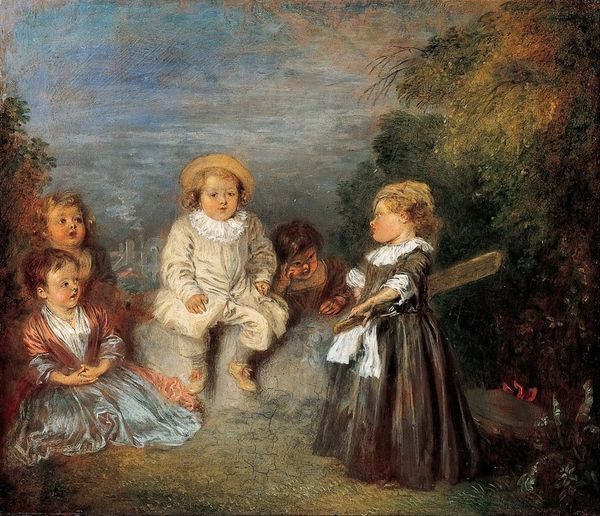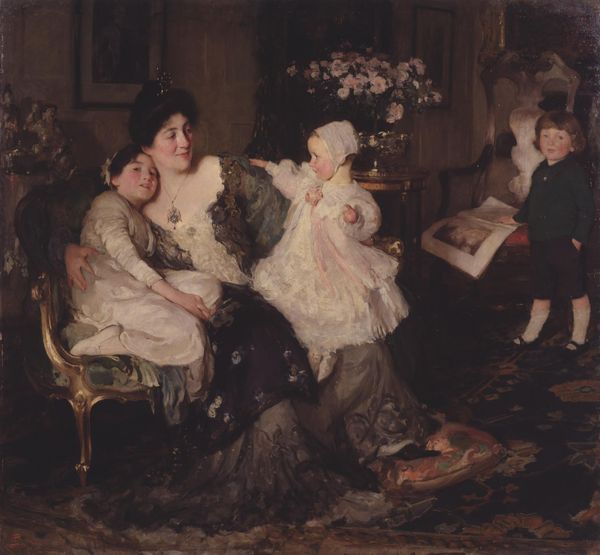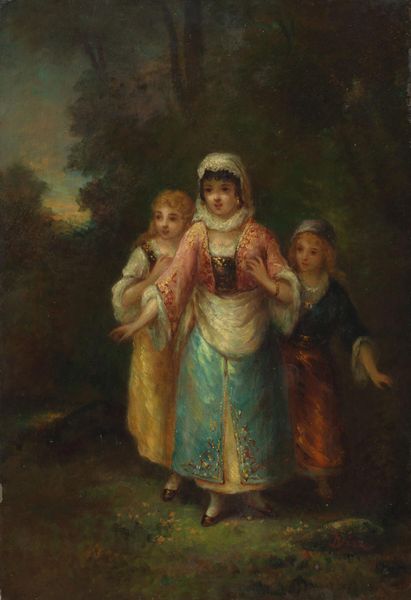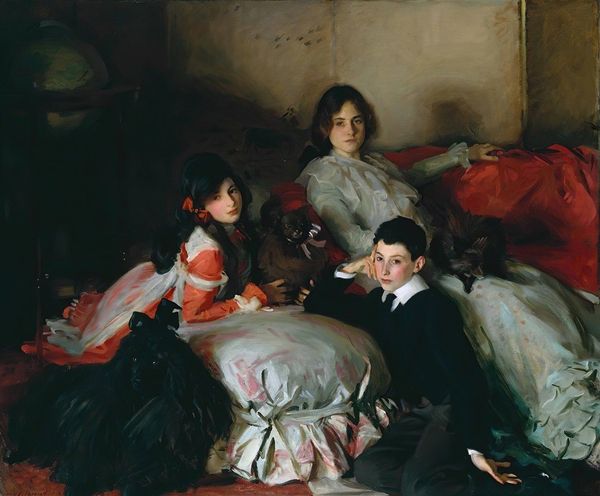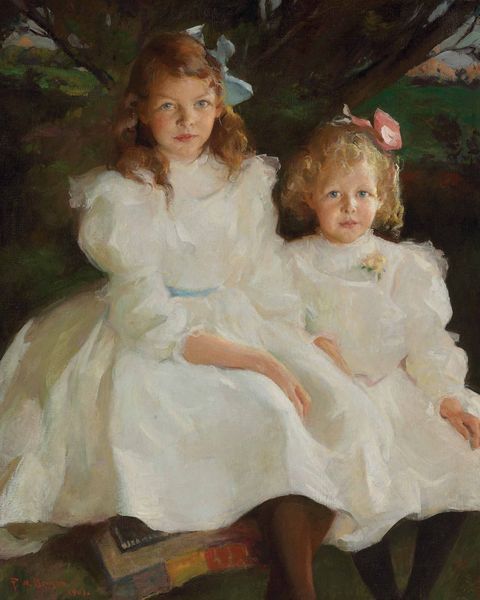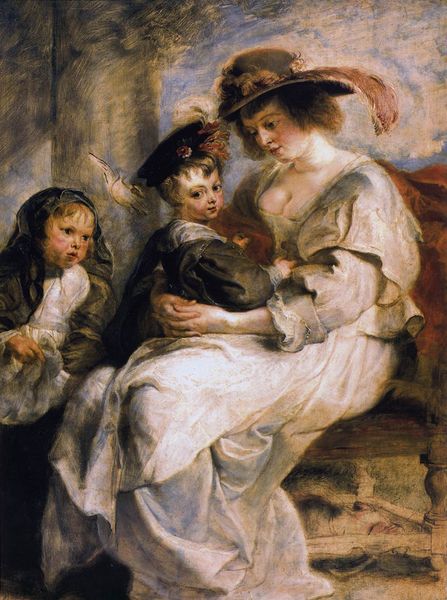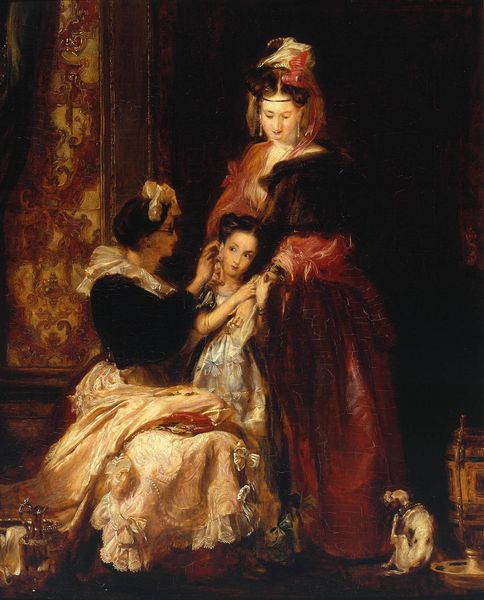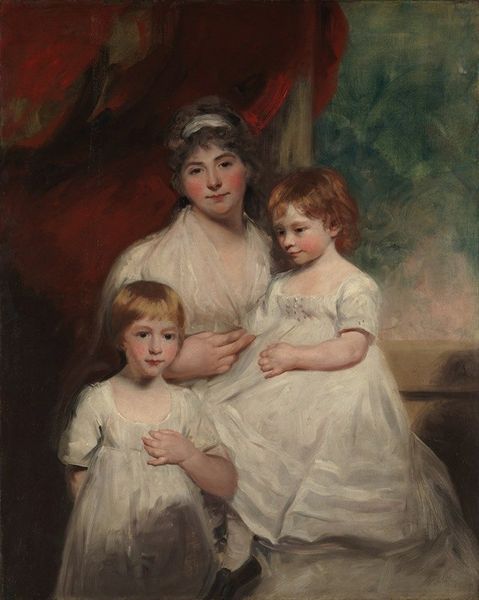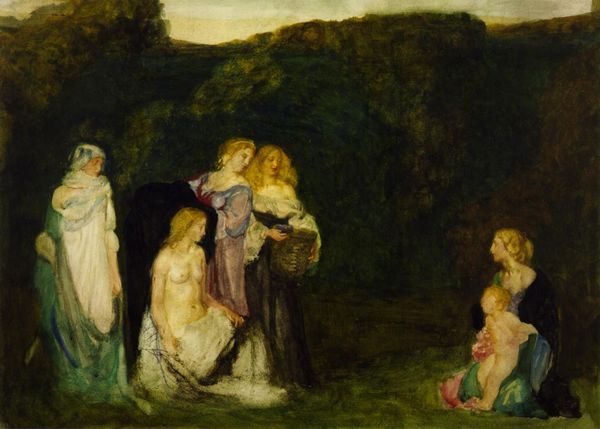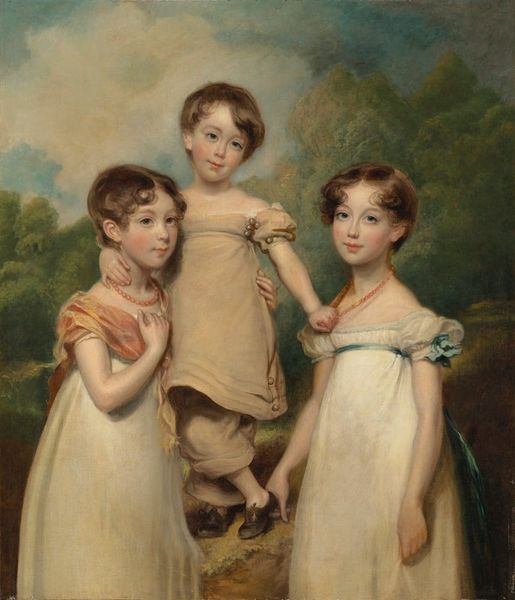
Copyright: Public Domain: Artvee
Editor: Here we have Thérèse Schwartze's "Portrait of Mrs. A.G.M. van Ogtrop-Hanlo," dating roughly from 1871 to 1944, done in oil paint. I am struck by the family dynamic that it captures, the textures of the ruffled dresses, and the mother’s pose with all her children. How do you read this artwork? Curator: Well, beyond the immediately visible family portrait, this work offers an intriguing lens through which to examine 19th-century societal expectations and the role of women. This is more than just a picture; it's a staged presentation of bourgeois femininity. Do you see how Mrs. van Ogtrop-Hanlo is positioned—regal and almost detached? It suggests a certain expectation for women of that era. Editor: That’s true, there is a strong feeling of display, I hadn’t thought of that. What would those expectations be? Curator: Largely confined to the domestic sphere, women were expected to manage the household and cultivate their children—especially their daughters—into equally refined young ladies. Schwartze, as a successful female artist, occupies a fascinating position. On the one hand, she paints these women, cementing their image in the societal consciousness; but on the other, her very act of creation defies those limitations imposed upon women. Editor: So it’s both reinforcing and subverting these ideals at the same time? I wonder about the subtle ways the children are posed—they’re not entirely uniform. Is that deliberate, perhaps showing hints of individuality? Curator: Exactly. And that tension is where the real depth lies. Look at how the gaze shifts among the figures—it invites us to consider them not just as pretty images but as individuals within a restrictive structure. What is she trying to tell us about the future, their own limitations? Editor: I see that now, the slight variations disrupt the sense of total control. I hadn’t considered the painting from that angle before, thinking about the restraints placed upon the subjects. Curator: It gives us an interesting starting point. These paintings encourage us to critically reassess the historical roles attributed to women. It invites dialogue and reevaluation.
Comments
No comments
Be the first to comment and join the conversation on the ultimate creative platform.
